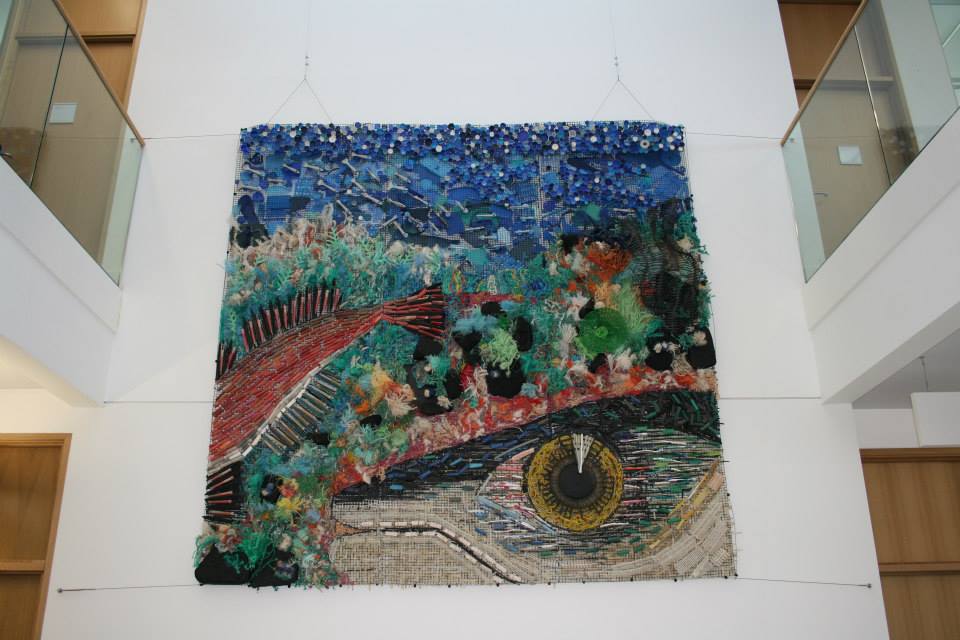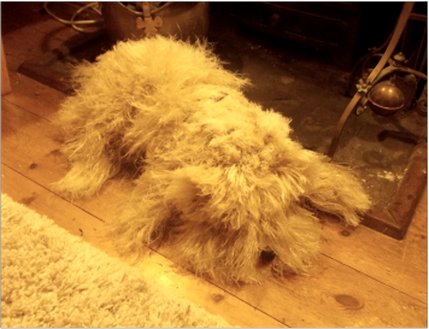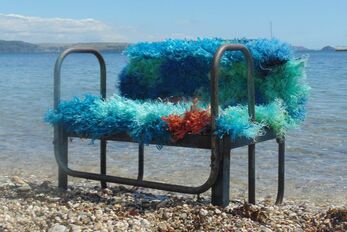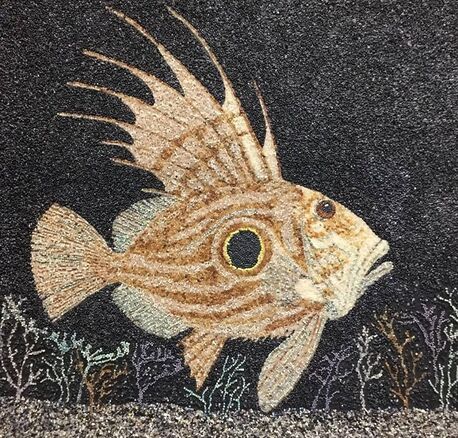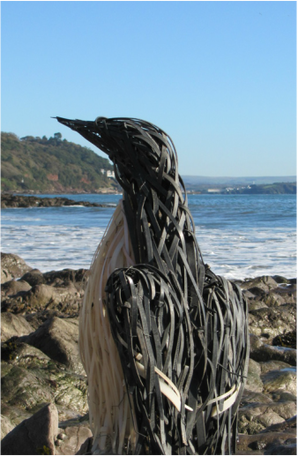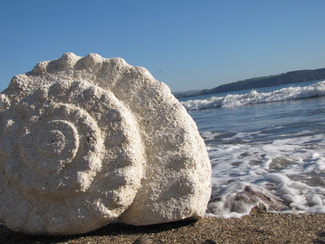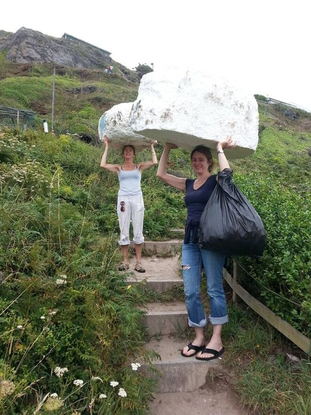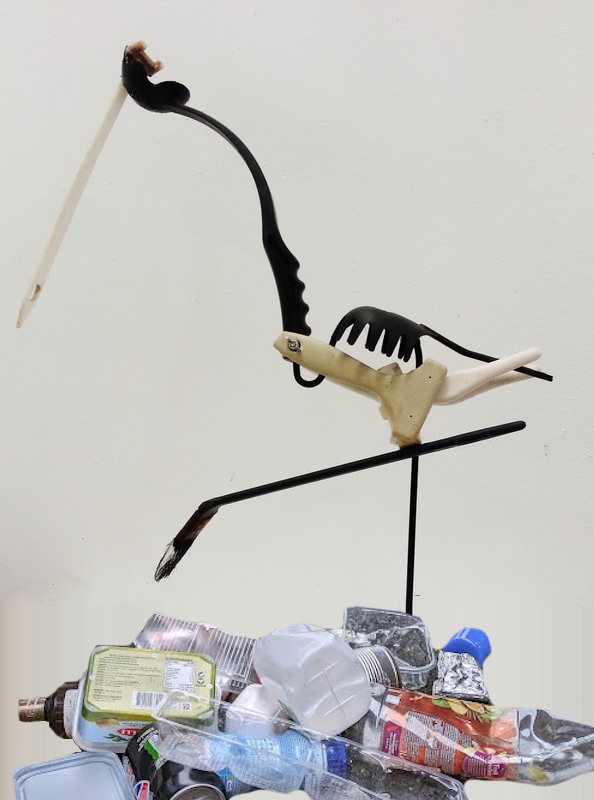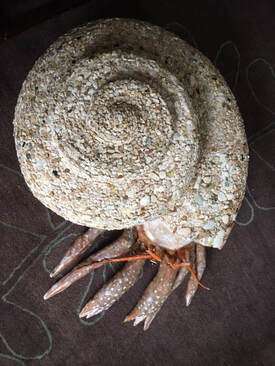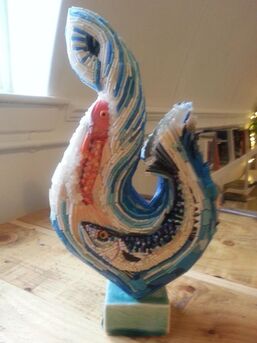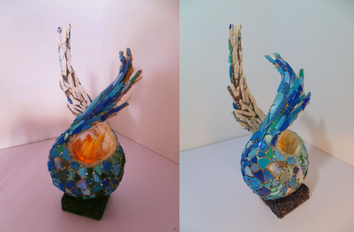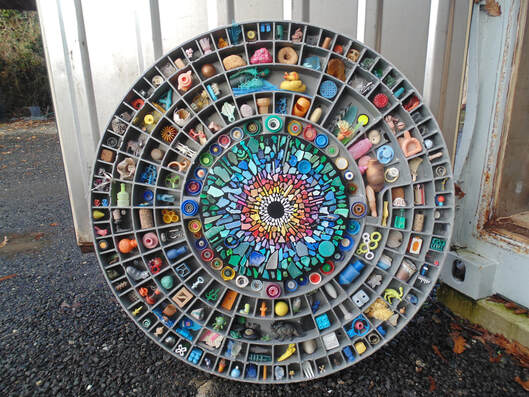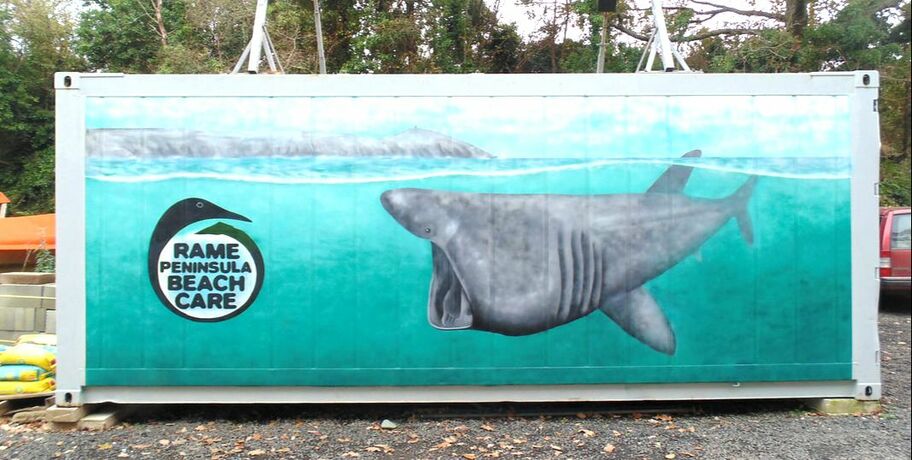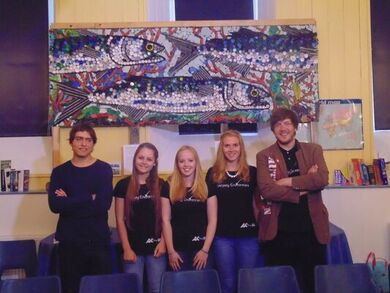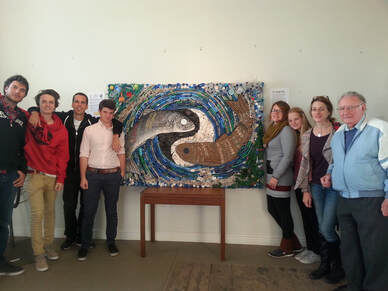|
Ocean plastic threatens nearly every marine life form and habitat.
My work aims to raise awareness about the dangers of ocean plastic pollution and to encourage people to be more thoughtful about their own impact on their environment. There is a huge variety of media that can be found in marine plastic.: Of all the medias I have used this waste has been my greatest source of artistic inspiration. As a busy working mum I have produced most of my work at home in my spare time either on my kitchen table or for my larger work in my garden. All of my pieces have been made from plastic washed up on our local shores in South East Cornwall.. It is no longer in my possession as it is being used by the community to tell people about the ocean plastic pollution crisis. I hope you enjoy my work and that you too feel inspired by the ocean plastic you collect. . Thank you for your interest! Liz 'Trawler Trash' ocean plastic mural
Trawler Trash is a 3m x 3m ocean plastic mural, partly made with a group of 100 Cornish school children in 2014 at the Environment and Sustainability Institute, Penryn, Exeter University.
Sea rope dog The hairy dog was made from a huge frayed knot that was washed up on Treganhawk beach, Whitsands
Sea rope armchair matt
John Dory (Zeus faber) 110 x 110 cm |
Guillemot
This was my first ever ocean plastic sculpture. I made it just after the PIB (Polyisobutylene) spill that happened off the coast Cornwall in 2013. The substance was thought to have been deliberately dumped by a ship out at sea. Thousands of birds died as a result but out of all the marine birds Guillemots had the most casualties. This sculpture was made using sea worn cable ties. Ammonite
We are living in the plastic age, the signs of which will one day form a layer in the rock strata. This thought inspired me to make this ammonite sculpture. I carved it out of a huge block of polystyrene found on the beach. Wading Bird Birds are being forced to wade through our rubbish! My bird sculpture comprises of sea worn paint brushes, a dog ball thrower, spaghetti scoop and a metal stand that was also found on the beach. |
The John Dory, in all it's detail, was created using approximately 64,000 nurdles and bio beads. These tiny pellets are used in plastic production or in sewage treatment works. These have have escaped into our rivers and ended up floating out to sea. The nurdles used here were collected from Whitsand Bay, South East Cornwall.
St Piran's Crab (Clibanarius Erthropus)
The St Piran's crab grows up to 3 cm long but I decided to make this sculpture 1 metre across to get this remarkable little creature noticed. The Clibanarius erythropus is a type of hermit crab, that disappeared from the coast of Cornwall for almost 50 years following the Torrey Canyon oil spill of 1967. The hermit crab was given the title 'St Piran's Crab' as part of a Spring Watch competition in 2016. St Piran is the patron saint of Cornwall. Like the legend of St Piran, people like to think of this little creature as a symbol of hope, that nature is resilient and given chances can recover from man made pollution.
The shell base is made from beached polystyrene. I texturized it with small sea worn polystyrene pieces. The extraordinary black and white spotty eyes of this adorable little creature has been replicated using black and white nurdles. Polystyrene is one of the worst and most widespread pollutants of the marine environment,
This sculpture now resides with the Cornish Wildlife Trust and is used as an exhibit.
The shell base is made from beached polystyrene. I texturized it with small sea worn polystyrene pieces. The extraordinary black and white spotty eyes of this adorable little creature has been replicated using black and white nurdles. Polystyrene is one of the worst and most widespread pollutants of the marine environment,
This sculpture now resides with the Cornish Wildlife Trust and is used as an exhibit.
This trophy was presented to M&S by the Blue Marine Foundation with Boat's international - 1916 ocean awards. M&S being one of the first retailers introducing a plastic bag charge and for their good sourcing of sustainable sea food.
The trophy was made using plastic cotton bud sticks, polystyrene and other fragments of ocean plastic. The sculpture was made in the shape of a protective fish hook amulet. It portrays strong healthy fish swimming in clear bubbly water.
Protective amulet Trophy The Phoenix
The Phoenix - a symbol of enlightenment, reborn with strength and wisdom
Ocean plastic commission for Y.CO yacht company.
Like a phoenix emerging from the ashes, this sculpture expresses the resilience and fragility of nature. Given chances nature can flourish but. humans have a responsibility to allow the marine environment to regenerate rather than completely destroy it.
The representation of wings trying to connect to make an infinity symbol, water, egg, and light from within symbolizes strength and growth. The materials used to make this sculpture are polystyrene, wire, ocean plastic fragments and plastic pellets.
Wheel of mixed fortune
I found this circle of compartments on Tregantle beach. I don't know what it is...I'd love to hear from you if you d!. It has been very useful for displaying some of our smaller more interesting beach finds. I find beach-combing and learning about the history of things we find fascinating. It is a hobby that is free, helps the environment, and rewards you with artistic inspiration and treasures.
I spray painted this Basking shark on the side of the Rame Penisula Beach Care 5 x 2 m container. It's where their beach cleaning equipment is stored.
